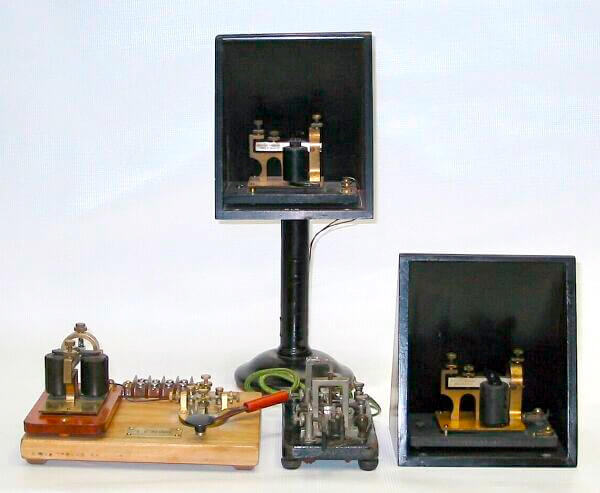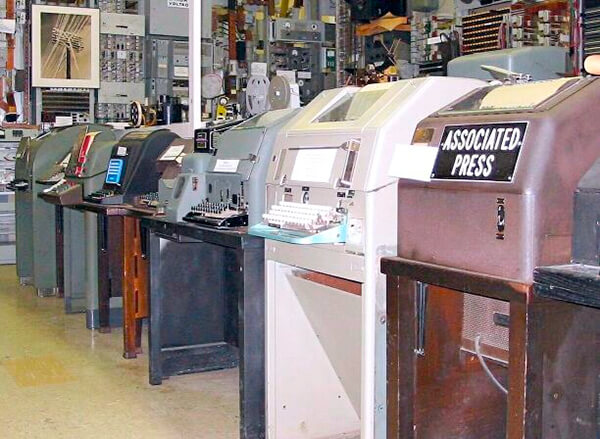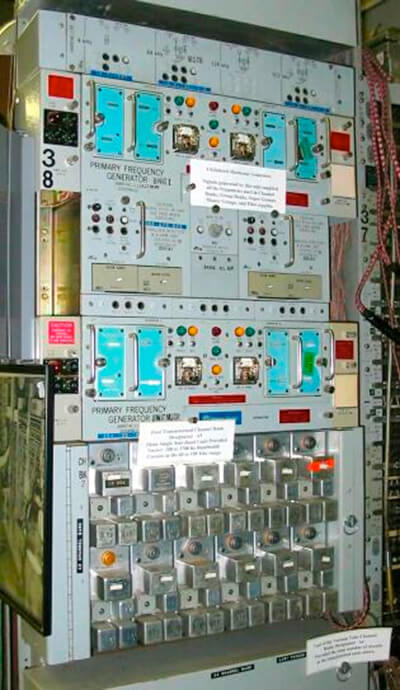The Connections Museum Seattle has a large collection of working telegraph and teletype machines on display for the general public. See below for more information about our Seattle exhibits.
Telegraph & Teletype
The Connections Museum Seattle - Telegraph & Teletype
This area of the museum contains toll devices, telegraph and teletype machines. This department of the telephone company was responsible for services such as cross country calling, dedicated (private) lines, secure communications both voice and data, telegraph and teletype. There are many working devices on display representative of each type.
Telegraph Keys and Sounders
The telegraph was invented by Samuel Morse in the 1840’s. It is a device to communicate between two remote locations. Operators on either end of the line would send and receive messages using a series of electrical pulses (short pulse is a dot) and dashes (which were three times longer.) Each pattern of dots and dashes represented a letter, for example, an A is .– , a B is –… and so forth. The sending operator would send a message letter by letter and the receiving operator would write it down.
Thomas Edison saved the life of a young girl who was almost run over by a train. To repay Edison, The girl’s father taught him Morse code and Thomas Edison worked as a Morse code operator for a number of years. Morse code preceded the invention of the telephone by about 35 years.
The devices shown in the picture from left front to right are a telegraph key and a local sounder, a Vibroplex key (bug), a sounder and in back another sounder.
Teletype Machines
Teletype machines were useful because they produced a written paper copy of the transmitted message. The museum has many different types of teletype machines from the year 1918 and forward. Over 30 types are displayed at the museum. Teletype machines were used by the FBI, commercial airlines, stock brokerage firms, and the wire services like Associated Press (AP) and United Press International (UPI) to distribute the news to newspapers and radio broadcasts.
A5 Channel Bank
The A5 channel bank was used to stack voice grade circuits in a LMX carrier system. The upper unit is a 4 kilohertz carrier supply and when combined with a harmonic generator provided 600 carrier frequencies for microwave transmission carrying voice grade and data circuits. The equipment on the bottom is a first generation solid state (transistorized) A-5 channel bank. It provided 12 single sideband voice grade circuits that were stepped up in frequency for transmission.



